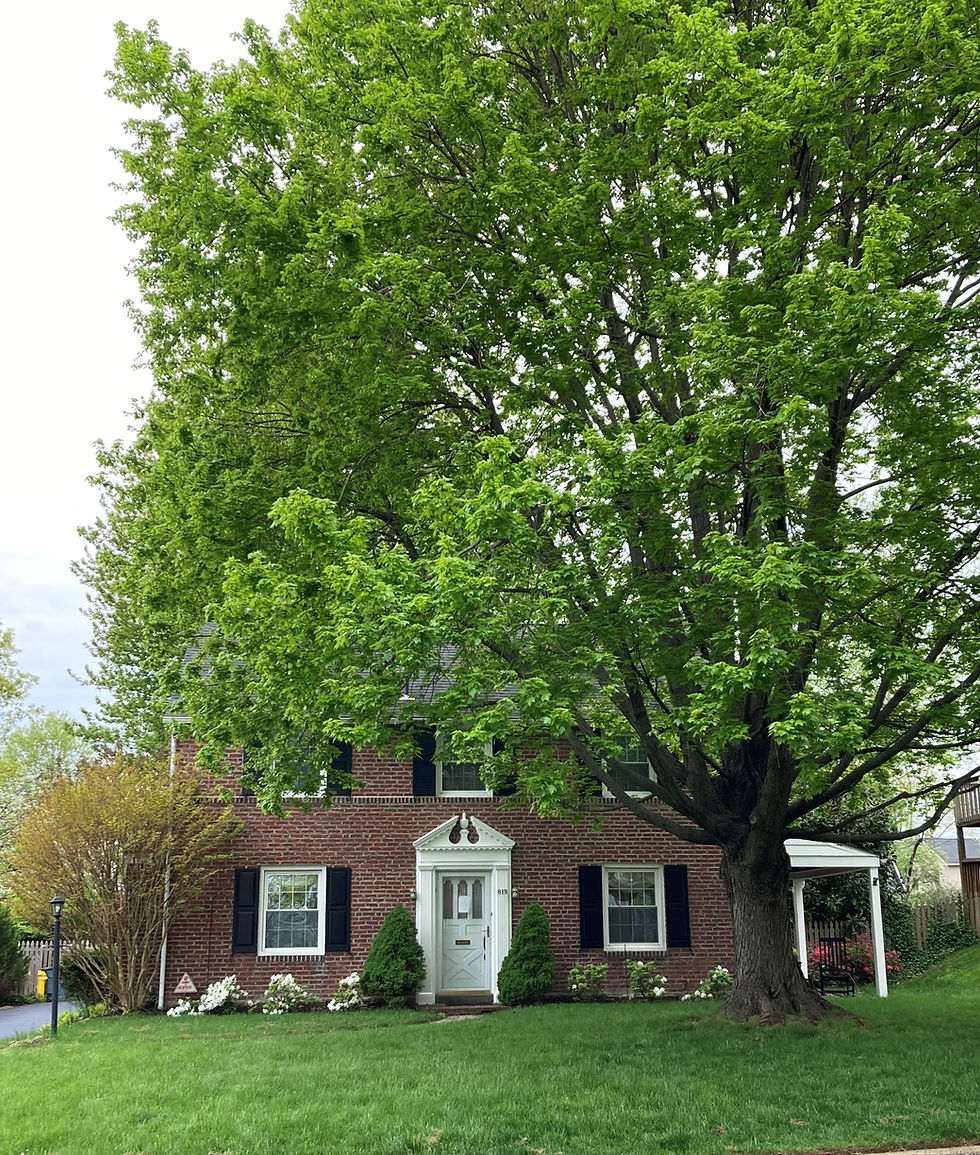Solar panels vs. trees – how to choose?
- plantnovanatives
- Dec 16, 2022
- 3 min read
Residents who are interested in installing solar panels often face a dilemma. Which is better for the environment, solar panels or shade trees? After all, climate change due to burning fossil fuels is threatening the very existence of trees, not to mention human beings, and the timeline for preventing catastrophic temperature rises is short. Before we get out the chainsaw, though, there are several other things to consider.
One of the main reasons to try to limit temperature rise is to prevent ecosystem collapse. The native trees in our yards are as much a part of that ecosystem as the ones in the Amazon, providing food, shelter and nesting places not only for birds and mammals but for a myriad of invertebrates that are a critical part of the web of life. If we do not even protect the environment where we live, we can hardly expect people in the Amazon to take more of an interest.
Sunny rooftops are an ideal place to put solar panels, since that real estate is already built upon, and since decentralizing the grid helps build resilience. The land use anticipated for solar farms and new transmission lines is so massive, and the willingness of companies to replace forests with them so counterproductive and disheartening, that the more we use our own rooftops, the better. But solar energy is neither the only way to reduce fossil fuel use nor the most efficient of the various options for homeowners. The first step should always be to reduce energy consumption, by weatherizing and taking other steps to reduce waste. For those ready to make a big investment, an alternative to consider is a heat pump or even a geothermal system for heating and air conditioning. As is true for solar panels, the cost of installation can be partially offset by a significant tax credit. Some utility companies including Dominion allow customers to choose a renewable energy option (although “renewable” is not always the same as “clean,” since it includes burning chopped down trees, for example. But much of that electricity is generated by wind and solar farms.) It will take considerable effort and broad participation for our community to meet its climate goals, but not everyone has to do everything themselves on their own property. Those with sunny roofs can contribute solar energy. Those with trees can take care of them.
Trees themselves are what are known as a “natural climate solution.” They provide benefits that mitigate the effect of climate change. Trees improve the energy efficiency of houses. In the winter, they reduce heating costs by blocking the wind. In the summer, they reduce air conditioning costs, since roofs and walls in the shade are often twenty degrees cooler than those in the sun. In addition, trees improve air quality and sequester carbon dioxide. Their ability to capture stormwater is particularly important in flood-prone suburban and urban areas with their excess of impervious surfaces. The leaves of the trees capture much of the rain before it even reaches the ground. Once it does, transpiration by canopy trees sucks thousands of gallons of water from the ground, thus enabling the soil to control flooding.
It is interesting to use the National Tree Benefit Calculator at the bottom of this web page to see what you save in monetary terms by preserving a few mature trees, strategically located around your property. For the birds and other critters that depend on them, the native trees are priceless.






No.1 Solar Energy Solution Company in Pakistan
Solar Cleaning Services in Karachi
Pakistan’s no 1 solar installer